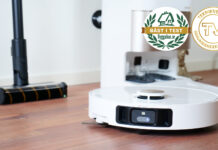We’ve posted information regarding Intel’s Nehalem platform and its support for various DDR3 memory clock frequencies in the past. We’ve come across some more now, actually a lot more. As stated in the previous reports, the Nehalem platform will officially support only DDR3-800 and DDR3-1066, but there is still a strong buzz that there will be official support for DDR3-1333 memory, but it has not been decided yet.
There have been some confusion as to why Intel Core i7 would not support DDR3 memory clocked at higher frequencies and the first thing you need to be aware of is that it is not the frequency of the memory that is the culprit.
The problem is rather that the memory and the processor internals are fed synchronized voltages. Previous reports have stated that anything above 1.65V would fry a Nehalem processor and it would certainly be hard to get any of today’s DDR3 memory modules to any kind of decent speeds at this voltage. But, these stories are exaggerated, but the fact remains that Nehalem processors are not going to like voltages above 1.7V.
You have to put it through some extreme handling for it to give up right away, but if you feed the memory with voltages above 1.8V, the processor could start degrading and finally cease to work. According to the information we’ve received you need to hit close to 2.0V to kill a Nehalem processor.
The conclusion is that the Nehalem platform, with its synchronized CPU and memory voltages, will be limited by the DDR3 modules ability to reach high frequencies at lower voltages.
This should create a whole new niche for DDR3 memory since we’ve also received information that says that latencies play only a minor role with Nehalem. More aggressive timings will boost scores in pure memory benchmarks, but the generic system performance seems to care little, if anything at all, about timings. This could mean that memory manufacturers could start to focus on hitting high frequencies at low voltages and loose timings for our dear Nehalem processors.
Already, tests with Corsair’s DDR3-1333 memory that handles 1600MHz at 1.64V and 1800MHz at 1.7V have been performed so we should still see some decent memory frequencies on the Nehalem platform, but it will certainly be a more delicate process of reaching there than it has been before.

















